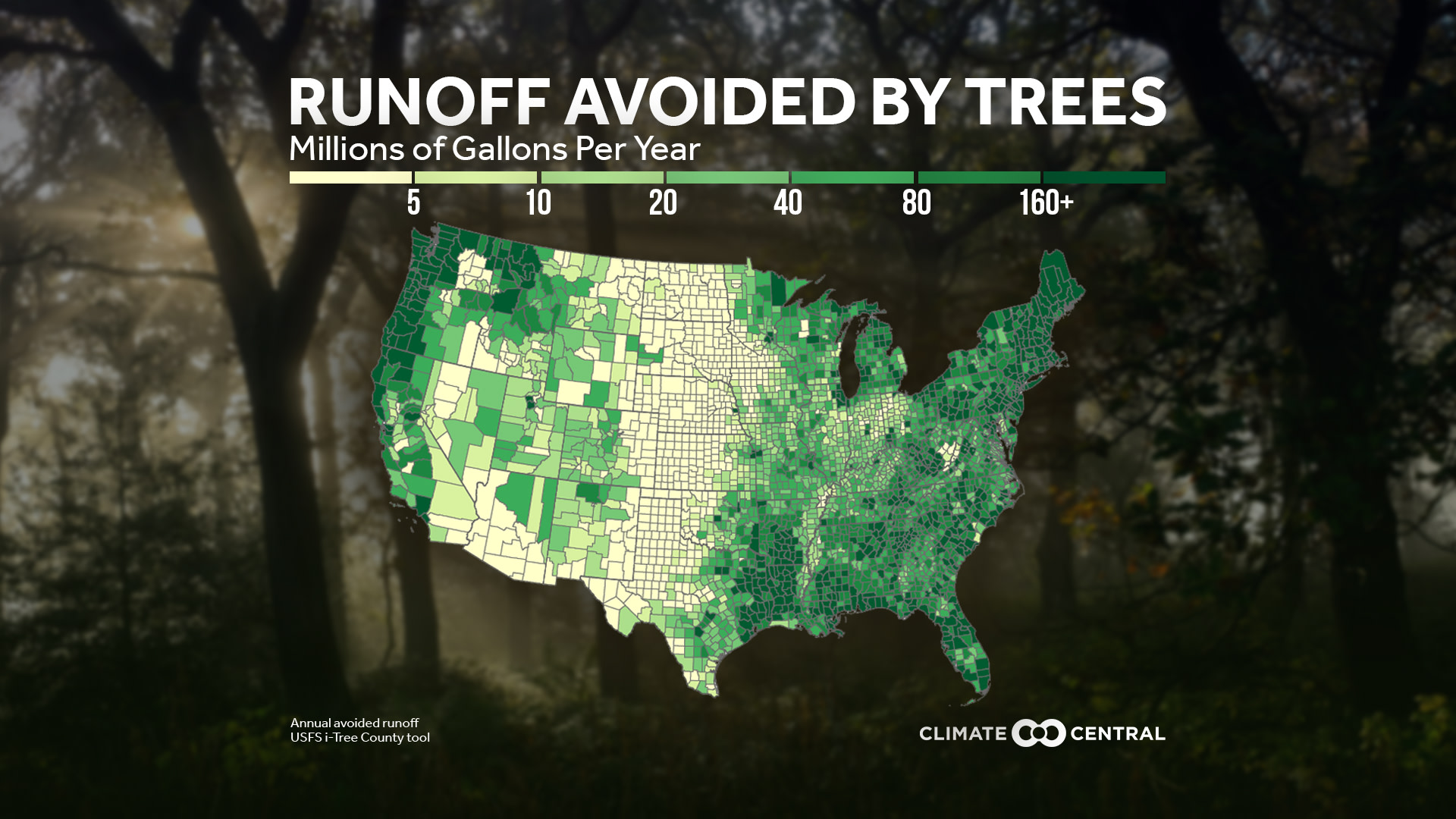Following last year’s celebration of trees’ many benefits, this year we focus on their ability to reduce flooding from stormwater.
With much of the country at or near peak foliage, it’s a fitting time to celebrate our nation’s trees. Last year, Climate Central used the U.S. Forest Service i-Tree tool to quantify trees’ carbon storage, storm runoff avoided, and air pollution absorbed. Today’s release dives deeper into how trees can reduce stormwater flood risks, given this year’s flooding from Houston to the Mississippi River.
As climate change leads to heavier downpours, floods like this year’s are happening more frequently. For three consecutive months this spring, the U.S. set a new record for its wettest 12-month period. Most cities are seeing their wettest days get even wetter, particularly in the Northeast and Midwest. And as the oceans heat up, stronger and wetter hurricanes are more likely—like Imelda and Harvey, which each flooded Houston with more than three feet of rain.
Title: JPG • PNG| No title: JPG • PNG
Enter trees. By absorbing rainwater, reducing erosion, and creating more permeable soils, trees save nearly 400 billion gallons of stormwater runoff in the contiental U.S. each year. That’s enough to cover the state of Rhode Island in more than a foot of water!
Stormwater avoided totals are highest in certain urban areas that are prone to high runoff rates. Harris, Texas (home to Houston) leads the Forest Service’s county data, followed by Middlesex, Mass. (near Boston), Allegheny, Penn. (home to Pittsburgh), and Cook, Ill. (home to Chicago). Results are similar when aggregated by media market, with New York, Atlanta, and Boston ranking highest. Trees also avoid more stormwater in rainier regions, from the Gulf Coast to the Pacific Northwest. (The annual rainfall map provides this perspective for you and your audience).
Title: JPG • PNG | No title: JPG • PNG
Reducing runoff isn’t the only way that trees limit climate impacts. The process of photosynthesis removes carbon dioxide from the atmosphere, helping forests offset 10 to 20 percent of U.S. greenhouse gas emissions each year. U.S. trees also remove more than 35 billion pounds of air pollutants every year, preventing more than half a million annual cases of acute respiratory symptoms. And in urban areas, trees’ cooling effect reduces U.S. energy bills by more than $5 billion each year. All the more reason to root for trees in our warming world.
National: Trees explainerNational: Trees CONUS totals
METHODOLOGY: 2010 county-level data is plotted from the U.S. Forest Service i-Tree County Tool. i-Tree uses canopy area, local weather data, and precipitation models (Hirabayashi 2015) to estimate annual avoided runoff. Data is not normalized to account for the differing sizes of counties. Local graphics aggregate the county data into Nielsen Designated Market Areas (DMAs), as described in last year’s release. Average annual county-level rainfall was calculated from 1970-2018 using the NOAA/NCEI nClimDiv dataset. Complete data was only available within the contiguous U.S.
